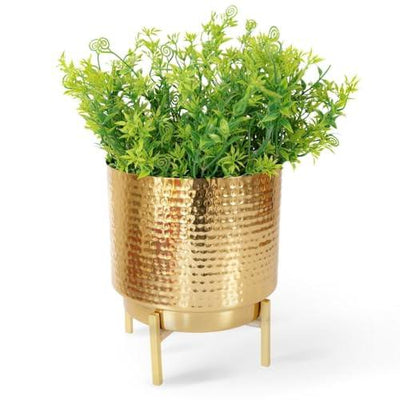Shining a Light on Indoor Plant Success: Understanding Light Requirements for Your Green Friends
Indoor plants are a fantastic way to bring nature indoors, adding life and vibrancy to any space. However, one of the most critical elements for their thriving health is light. Different indoor plants have varying light requirements, and understanding these can make a significant difference in the health of your greenery. In this guide, we will explore the essential aspects of light requirements for indoor plants, focusing particularly on the beloved Rubber Plant.
The Importance of Light for Indoor Plants
Plants, just like humans, require light to survive. Through a process called photosynthesis, they convert light into energy that fuels their growth. In indoor settings, natural light is often limited, making it crucial to know how much and what type of light your houseplants need.
Understanding light requirements can help you create the ideal conditions for your indoor plants, ensuring they thrive rather than merely survive. Not only does the right amount of light promote healthy growth, but it also helps prevent issues such as leggy growth and pest infestations.
Types of Light for Indoor Plants
To cater to your indoor plants’ needs, it’s vital to distinguish between the types of light they can receive:
1. Direct Light
Direct sunlight reaches your indoor plants without any obstructions. This type of light is typically found near south-facing windows, where the sun’s rays shine bright throughout the day. Direct light is ideal for sun-loving plants like succulents and the popular Rubber Plant.
2. Indirect Light
Indirect light occurs when sunlight is filtered through another object, like sheer curtains or the leaves of nearby trees. This type of light is softer and more diffused, creating a mellow environment for many indoor plants. Most indoor plants, including the Rubber Plant, thrive in bright, indirect light.
3. Low Light
Low light refers to areas of your home that receive minimal sunlight, such as north-facing rooms or spaces that are quite far from windows. While some plants can adapt to these conditions, others may struggle without adequate light. “Low-light tolerant” indoor plants are ideal for these areas, but the Rubber Plant might not thrive as much here.
Assessing Your Space: Finding the Right Spot for Your Indoor Plants
Before bringing home your new green companions, take time to assess your living space. Which rooms get the most sunlight? How are your windows positioned? Are there any potential obstructions that might block light? Answers to these questions can help you determine the best placements for your indoor plants.
Window Orientation and Its Impact on Light Availability
The orientation of your windows plays a significant role in the lighting your plants receive:
- South-Facing Windows: These get the most sunlight throughout the day. Perfect for light-hungry plants like the Rubber Plant.
- East-Facing Windows: Morning sunlight provides bright, gentle light ideal for many indoor plants, as it is less intense compared to afternoon sun.
- West-Facing Windows: These receive strong sunlight in the late afternoon and evening. Plants here may need a bit of protection during the peak hours of sunlight.
- North-Facing Windows: Generally offer lower light conditions and are best suited for shade-loving plants.
Understanding the Specific Needs of the Rubber Plant
The Rubber Plant (Ficus elastica) is a popular choice among indoor plant enthusiasts. With its beautiful glossy leaves and ability to purify the air, it’s no wonder that many people want to keep one in their home.
Light Preferences
The Rubber Plant thrives in bright, indirect light but can also tolerate some direct sunlight. However, excessive direct light can scorch its leaves. It's essential to monitor your Rubber Plant to determine the best lighting conditions. If you notice the leaves wilting or losing colour, it might be time to adjust its position.
Common Light-Related Issues
Even for sturdy plants like the Rubber Plant, improper lighting can lead to several issues:
- Leggy Growth: If your Rubber Plant is stretching towards the light, it may not be getting enough. This signalling is crucial for plant owners to address their needs promptly.
- Leaf Drop: Sudden changes in light exposure can cause stress, leading to dropped leaves. Maintain a consistent environment when possible.
- Scorched Leaves: Direct sunlight can cause burns or shrivelling if the plant is not accustomed to high-intensity light.
Seasonal Changes and Their Effect on Indoor Plant Lighting
As seasons change, so do lighting conditions in your home. During winter months, days get shorter, and sunlight might be less intense. Your indoor plants, including the Rubber Plant, may need adjustments to their locations to keep receiving the ideal amount of light.
Here are some tips to adapt to seasonal changes:
- Move plants closer to windows during winter to ensure they get the brightest light available.
- Consider using grow lights to supplement natural light if necessary.
- Monitor your plants more closely for any signs of stress or abnormalities.
Artificial Lighting Options for Indoor Plants
Sometimes, natural light is just not enough. If you live in an area with minimal sunlight or during the winter months, artificial lighting can be a great solution. Here are some common artificial lighting options:
1. LED Grow Lights
LED grow lights are energy-efficient and provide the full spectrum of light that plants need. They produce less heat, making them suitable for indoor use without causing stresses to the plants.
2. Fluorescent Lights
Fluorescent lights are another option for growing indoor plants. They emit a cooler light that works well for many plants, including the Rubber Plant. You can use these lights positioned at a distance to mimic natural light conditions.
3. Incandescent Lights
Although not as energy-efficient as LEDs or fluorescents, incandescent lights can still work for very short periods. However, be cautious, as they generate a lot of heat, which can lead to overheating in plants.
Maximising Light Exposure for Healthy Indoor Plants
Providing your indoor plants with the right environment goes beyond simply placing them in the appropriate spot. Here are some additional tips to maximise their light exposure:
- Rotate Your Plants: Regularly rotating your indoor plants helps them receive even light on all sides, preventing imbalanced growth.
- Clean the Leaves: Dust and debris can accumulate on leaves, blocking light absorption. Regularly clean the leaves with a damp cloth to keep them pristine.
- Avoid Clutter: Ensure that no furniture or decorations block light from reaching your plants. Clear any obstacles that could hinder growth.
Final Thoughts: Cultivating a Luminous Indoor Oasis
Understanding the light requirements for indoor plants is a vital step in ensuring their health and longevity. Whether you have a Rubber Plant or other indoor plants, providing them with the right kind of light can make a substantial difference in their growth and appearance. Take the time to assess your space, and don’t hesitate to make adjustments as needed. Your efforts will be rewarded with lush, vibrant plants that brighten up your home.
Embrace the beauty of indoor gardening and enjoy watching your beloved plants flourish in their illuminated surroundings!

















Leave a comment